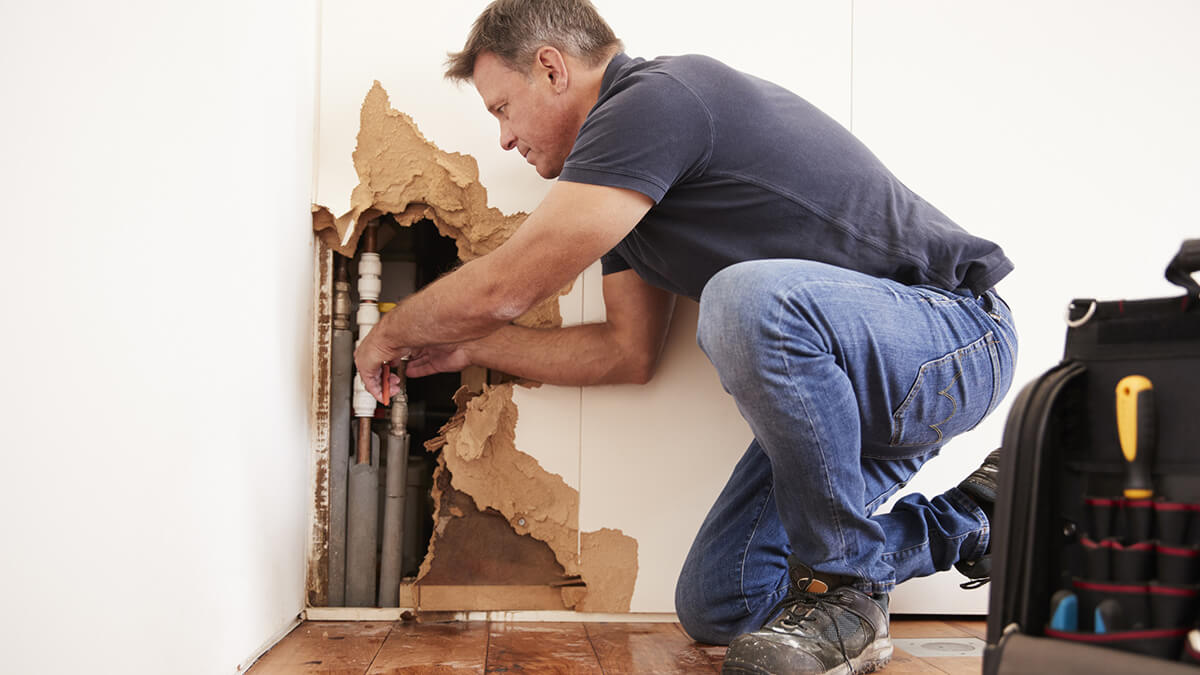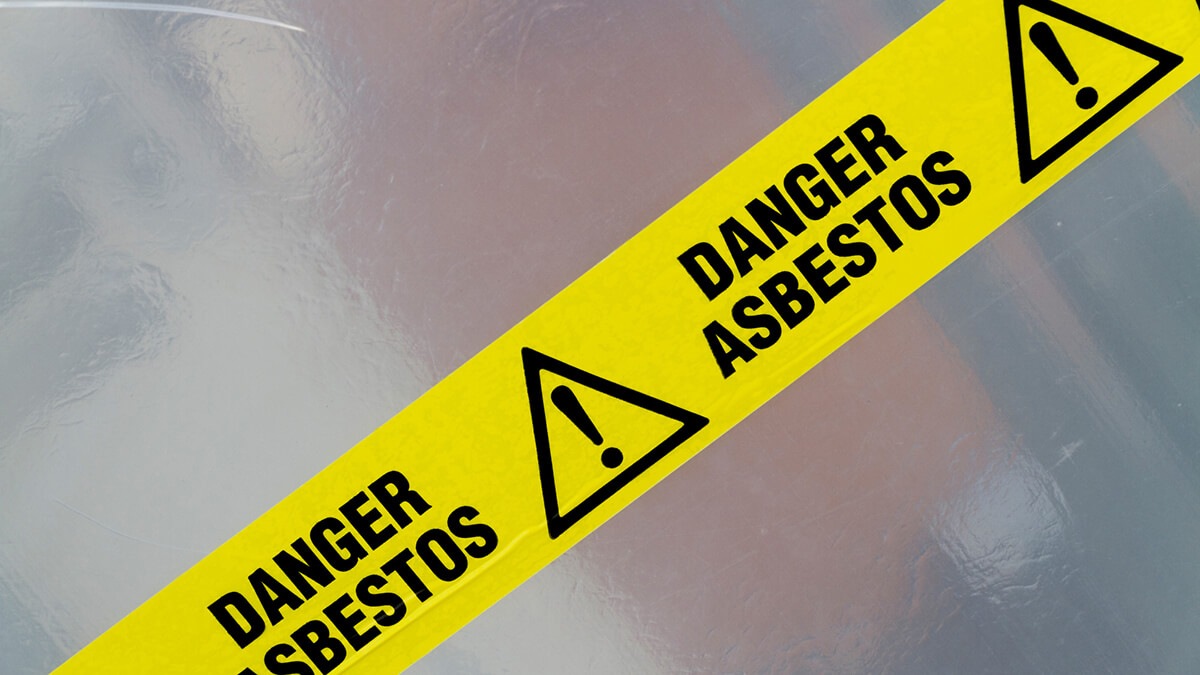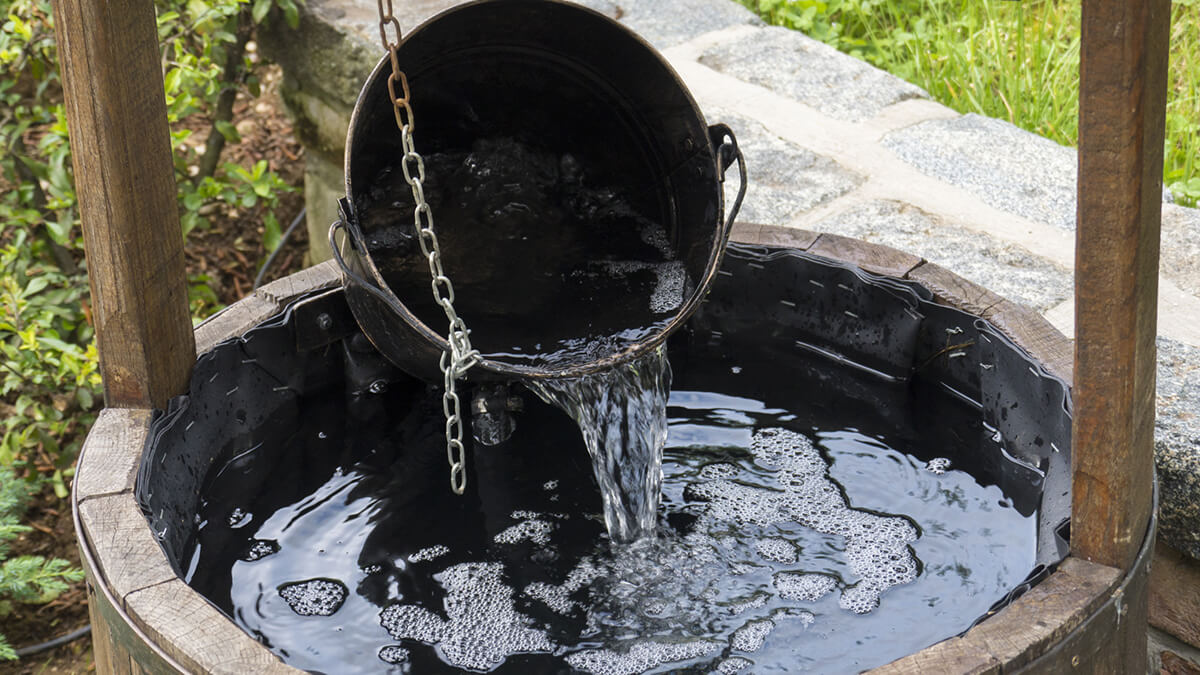Water damage hits fast and hits hard. One day it’s a small leak, the next you’re ripping up soggy floors or spotting mold creeping along your drywall. And if you’ve never dealt with it before, the repair costs can feel like a cold splash of reality.
What most homeowners want to know right away is, how much is this going to cost me? The answer depends on where the water hit, how bad it got, and what kind of water you’re dealing with, because not all water is created equal when it comes to cleanup.
In this guide, I’ll break down what you can expect to pay for different types of repairs, which hidden costs to watch out for, and how the kind of water (yes, there are categories) affects the total bill. I’ll also cover when fixing the damage might not be worth it, and why some folks decide to sell instead.
Got serious water damage and not sure if fixing it is worth the time or money? You might be better off skipping repairs altogether. iBuyer.com gives you a data-backed cash offer, so you can sell fast, avoid the stress, and move on your schedule.
Compare Cash Offers from Top Home Buyers. Delivered by Your Local iBuyer Certified Specialist.
One Expert, Multiple Offers, No Obligation.
Water Damage Repair Cost
- Cost to Repair Water Damage: What to Expect in 2025
- Water Damage Repair Cost by Room or Feature
- Type of Water Makes a Big Difference
- Hidden Costs: Structural Damage, Mold, and More
- Water Damage Restoration Steps and What Pros Charge
- Repair or Replace? When It’s Time to Sell Instead
- Reilly’s Two Cents
- Water Damage: Act Fast or Pay More
- Frequently Asked Questions
Cost to Repair Water Damage: What to Expect in 2025
Most homeowners spend between $1,361 and $6,270 for water damage repairs, depending on how far the water spread and what materials were affected. If you’re looking for a rough average, expect to pay around $3,300.
A quick way to ballpark your cost? Multiply the damaged square footage by $7.50, that’s the typical rate restoration companies charge per square foot. Just keep in mind this number can climb if you’re dealing with mold, contaminated water, or hidden structural issues.
Several factors will swing your cost higher or lower:
- Type of water (clean, gray, or black)
- Location of damage (roof, basement, floors, etc.)
- Size of the affected area
- How quickly you catch it
The faster you act, the more you save. Delays lead to mold, rotting materials, and higher bills. Think of water damage as a ticking clock, it doesn’t get cheaper with time.
Water Damage Repair Cost by Room or Feature
Water damage doesn’t hit every room the same. Some areas cost more to fix because of materials, accessibility, or what’s underneath. Here’s what you can expect, room by room.
Bathroom, Kitchen, and Laundry
These spaces have plumbing everywhere, so leaks can go unnoticed until damage is widespread. Repairs here average $1,500–$4,000, especially if cabinets or tile floors are involved. Mold growth is also more common in these areas.
Hardwood Flooring and Subfloors
Water and wood don’t mix. Swollen boards, warped edges, and musty smells mean trouble. Replacing hardwood flooring can run $8–$25 per square foot, while subfloor repairs often add another $500–$1,000.
Ceilings and Drywall
Leaks from above? Expect stains, sagging, and the risk of collapse. Ceiling and drywall repair typically costs $500–$2,500, depending on how much needs replacing. You’ll also need repainting after it dries out.
Basements and Foundations
These are often hit hardest. Flooded basements may need water extraction, drying, and structural reinforcement. You’re looking at $2,000–$10,000+, especially if foundation cracks or electrical damage is involved.
Roofs and Attics
Storms or ice dams can push water through your roof fast. Shingle replacement and roof patching start around $500, but full roof repairs or insulation replacement in the attic can reach $5,000 or more.
Type of Water Makes a Big Difference
Not all water is the same. What kind of water caused the damage plays a big role in what you’ll pay, and how urgent the cleanup needs to be.
Clean Water (Category 1)
This is water from broken pipes, overflowing sinks, or rain. It’s the cheapest to fix because it hasn’t touched contaminants. If caught early, repairs might cost $3 to $4 per square foot. But even clean water can cause mold if left too long.
Gray Water (Category 2)
This water comes from things like washing machines, dishwashers, or showers. It may carry dirt, soap, or minor bacteria. You’ll likely pay $4 to $6 per square foot to clean and repair areas touched by gray water.
Black Water (Category 3)
This is the bad stuff, sewage backups, toilet overflows, or floodwater from outside. It contains harmful bacteria and requires full hazmat-level cleanup. Costs here jump to $7 to $10 per square foot and often include total replacement of affected materials.
No matter what, the longer the water sits, the worse it gets. Even clean water can “turn gray” or “black” over time. That’s why professionals always ask: What kind of water are we dealing with?
Hidden Costs: Structural Damage, Mold, and More
Some water damage is obvious, like soaked carpets or bubbling drywall. But the real trouble starts when water sneaks into hidden places. That’s where the most expensive repairs tend to hide.
Water that seeps behind walls or under subfloors doesn’t just sit there. Over time, it softens support beams, warps wood framing, and weakens the overall structure of your home. If the damage spreads to load-bearing areas, you could be looking at $5,000 to $15,000 in structural repairs. In extreme cases, entire sections of flooring or walls need to be rebuilt from the studs out.
Then there’s mold, which often starts growing in as little as 24 to 48 hours. It loves warm, damp areas, think crawl spaces, behind cabinets, or inside walls. By the time you see mold, it’s usually much worse behind the scenes. Professional mold remediation runs from $1,000 to over $6,000, especially if the HVAC system gets contaminated.
One red flag to look for? That stale, musty smell, even after everything looks dry. It’s often the first sign of mold or lingering water inside your walls or floors. Another clue: sudden allergy symptoms or a spike in asthma issues, which can come from mold spores circulating indoors.
And here’s the kicker, insurance might not cover it. Most policies will help with sudden, accidental damage but not with mold or structural issues that result from slow leaks or delays in cleanup. That’s why early action is key. You’re not just saving money, you’re protecting your home’s bones.
Water Damage Restoration Steps and What Pros Charge
If you’re bringing in a professional water damage restoration company, here’s what the process usually looks like, and what you might pay along the way.
Step 1: Inspection & Damage Assessment
A restoration company starts with a full inspection. They’ll use moisture meters, thermal cameras, and visual checks to map out the water’s path. This step usually costs around $200 to $500, but it’s often included if you hire them for the full job.
Step 2: Water Extraction & Drying
Next, they remove any standing water using pumps or vacuums. Then they bring in heavy-duty dehumidifiers and air movers to dry out walls, floors, and framing. This phase costs between $1,000 and $3,000, depending on the size of the water-damaged area.
Step 3: Cleaning, Sanitizing & Repairs
Once things are dry, they clean and disinfect the area, especially if gray or black water was involved. Any damaged drywall, flooring, or insulation is removed and replaced. This cleanup and rebuild phase often adds another $1,000 to $4,000 to your total.
Most pros bundle these steps, but always ask for an itemized quote. And be wary of “one-size-fits-all” pricing. Each job is unique, and costs should match the scope.
Pro tip? Choose a restoration company that’s certified by the IICRC (Institute of Inspection, Cleaning and Restoration Certification). It means they follow industry standards, and you’ll have better luck getting insurance to cover it.
Repair or Replace? When It’s Time to Sell Instead
Sometimes, fixing the damage makes sense. But there’s a point where the costs, time, and stress just aren’t worth it, especially if the water damage is severe or part of a bigger problem.
If you’re dealing with a flooded basement, multiple burst pipes, or black water contamination, repairs could easily top $10,000 to $20,000. Add in the time it takes for insurance adjusters, contractors, and inspections, and you might be stuck in limbo for months.
And even after the repairs? Your home’s resale value could take a hit. Water damage, especially if mold was involved, can make buyers hesitate, even with proof of repairs.
That’s why some homeowners choose a different path: selling as-is for cash.
If the numbers don’t add up, iBuyer.com offers a faster, cleaner way out. You can skip repairs, showings, and the waiting game. Instead, get a data-backed cash offer, set your own closing date, and move on without the mess.
Sometimes, the smartest fix is no fix at all.
Reilly’s Two Cents
I’ve helped sellers who were completely overwhelmed by water damage, some with mold creeping up their drywall, others with flooded basements after a pipe burst while they were on vacation. And I’ve seen how fast a bad situation can get worse, especially if you wait too long or chase the cheapest fix.
If you’re in this boat, here are a few things I always tell people to do first:
- Document everything, photos, videos, receipts. Your insurance claim depends on proof.
- Call your insurer before doing major cleanup. You don’t want to throw out something they need to see.
- Get multiple quotes. One restoration company might miss things another catches, especially behind walls or under floors.
- Don’t assume it’s dry. Moisture meters and thermal cameras can find wet spots you can’t see or feel.
- Check your HVAC system. Mold can spread through your vents before you even notice it’s there.
And if the damage is widespread? Don’t sink time and money into a home that still may not sell easily. I’ve worked with sellers who ended up with more peace of mind, and often more money, by selling for cash and walking away clean.
Water Damage: Act Fast or Pay More
Water damage is one of those things that gets worse the longer you wait. Whether it’s clean water from a pipe or black water from a flood, the cost climbs fast, and so does the risk of mold and hidden damage.
Understanding what you’re up against helps you make smarter decisions. From small ceiling stains to soaked subfloors, every repair has a price tag. The key is knowing when it’s worth fixing, and when it might be better to walk away.
If you’re staring down a massive repair bill and wondering if it’s even worth the effort, there’s another option. iBuyer.com gives you a fast, fair cash offer, so you can skip the stress, skip the repairs, and move forward on your terms.
Instant Valuation, Confidential Deals with a Certified iBuyer.com Specialist.
Sell Smart, Sell Fast, Get Sold. No Obligations.
Frequently Asked Questions
Most homeowners pay between $3 to $10 per square foot, depending on the type of water and how quickly it’s addressed. Clean water costs less, while black water or mold drives up the price.
Clean water is cheapest to clean up. Gray water (from appliances) carries minor contaminants and costs more. Black water (sewage or floodwater) requires full remediation and is the most expensive.
Usually, yes, if the damage is sudden and accidental, like a burst pipe. But insurance may not cover mold, long-term leaks, or damage caused by neglect. Always check your policy details.
You can handle small, clean water issues if caught quickly. But for anything involving gray or black water, mold, or hidden damage, hiring a certified restoration company is the safer (and often required) choice.
Musty smells, bubbling paint, warped floors, and unexplained allergy symptoms often point to moisture behind walls or under flooring. These are red flags that need a closer look.
Reilly Dzurick is a seasoned real estate agent at Get Land Florida, bringing over six years of industry experience to the vibrant Vero Beach market. She is known for her deep understanding of local real estate trends and her dedication to helping clients find their dream properties. Reilly’s journey in real estate is complemented by her academic background in Public Relations, Advertising, and Applied Communication from the University of North Florida. This unique combination of skills has enabled her to seamlessly blend traditional real estate practices with cutting-edge marketing strategies, ensuring her clients’ properties gain maximum visibility and sell quickly.
Reilly’s career began with a strong foundation in social media marketing and brand communications. These skills have proven invaluable in her real estate practice, allowing her to offer innovative marketing solutions that set her apart in the industry. Her exceptional ability to understand and meet clients’ needs has earned her a reputation for providing a smooth and satisfying transaction process. Reilly’s commitment to client satisfaction and her innovative approach have garnered her a loyal client base and numerous referrals, underscoring her success and dedication in the field.
Beyond her professional achievements, Reilly is passionate about the Vero Beach community. She enjoys helping newcomers discover the charm of this beautiful area and find their perfect home.
Outside of work, she loves exploring Florida’s stunning landscapes and spending quality time with her family. Reilly Dzurick’s combination of expertise, marketing savvy, and personal touch makes her a standout real estate agent in Vero Beach, Florida.




